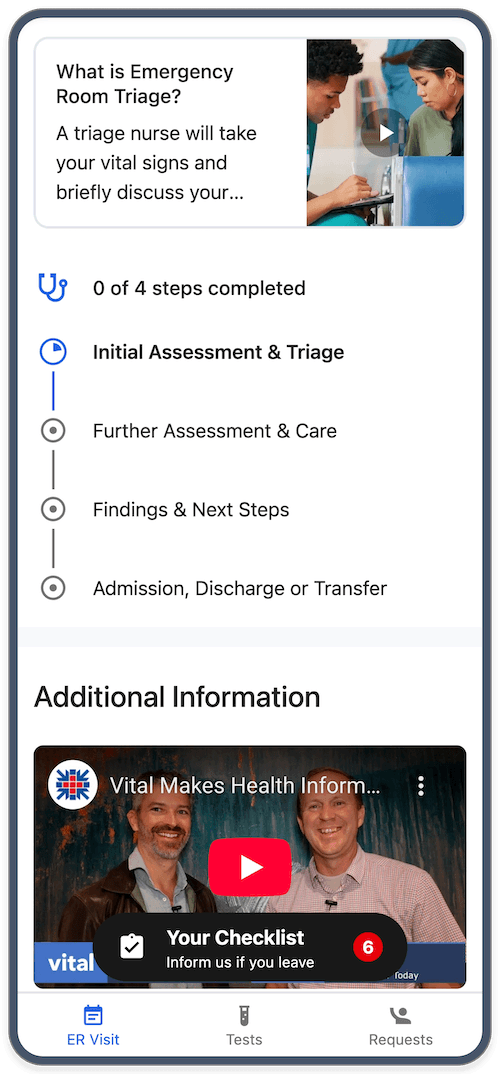
Function
Emergency department software: AI-powered patient communication & wait time predictions
As a clinician, you understand both the importance and difficulty of keeping your patients safe and well informed
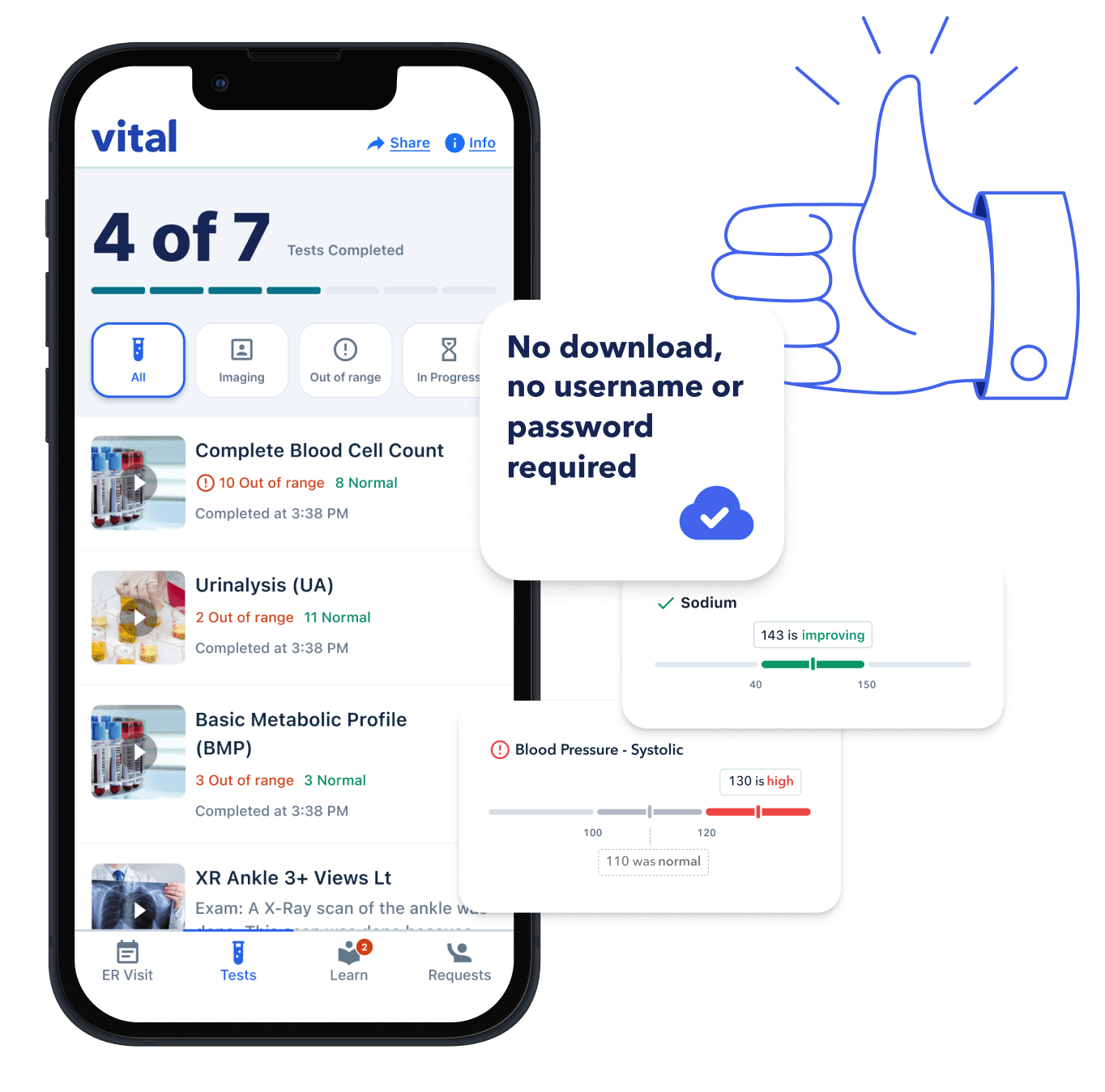
Vital keeps your patients informed, allowing you to stay on task
As a clinician, you understand both the importance and difficulty of keeping your patients safe and well informed. It’s a balance. And this balance tends to tilt toward safety and medical quality when the ER is busiest--leaving many of your patients wondering what is happening. Vital is designed to help you communicate with your patients when you need it most.
Vital is a groundbreaking platform that addresses a critical gap in hospital workflows, which is why it has become widely adopted by patients. In the ER, more than half of the patients use Vital on any given day, and millions of patients across the country rely on it each year. Essentially, Vital provides the updates and information to patients that you would deliver if you had the time to individually communicate every aspect of their care.
So, how does it work? Vital taps into your EHR and uses the same clinical information you have access to. It uses this information to communicate with your patients through a secure digital platform with the goal of answering their questions, preparing them for what’s next, and ensuring regular effective communication.
Health systems like CommonSpirit, Mercy, IU Health, UPMC, Advent, and Emory use Vital’s suite of products to take load off the Emergency Department, while decreasing LOS & LWOBS and increasing patient experience scores.

No download, no username & password required
Vital taps into your EHR to detect a new ED visit. Patients register just as they do today, with registration staff stating: “This hospital keeps patients up-to-date using text messages and a web-app; what’s the best mobile number for you?”. That’s all the “work” anyone needs to do.
Patients are sent an SMS with a special link, unique to each patient. Think of the link like an airline record locator, or password reset link.
No download or user-name and password are required.
By making it easy and secure, 60%+ patients utilize Vital during an ER visit (70-75% in pediatric ERs). That’s almost everyone who is vertical.
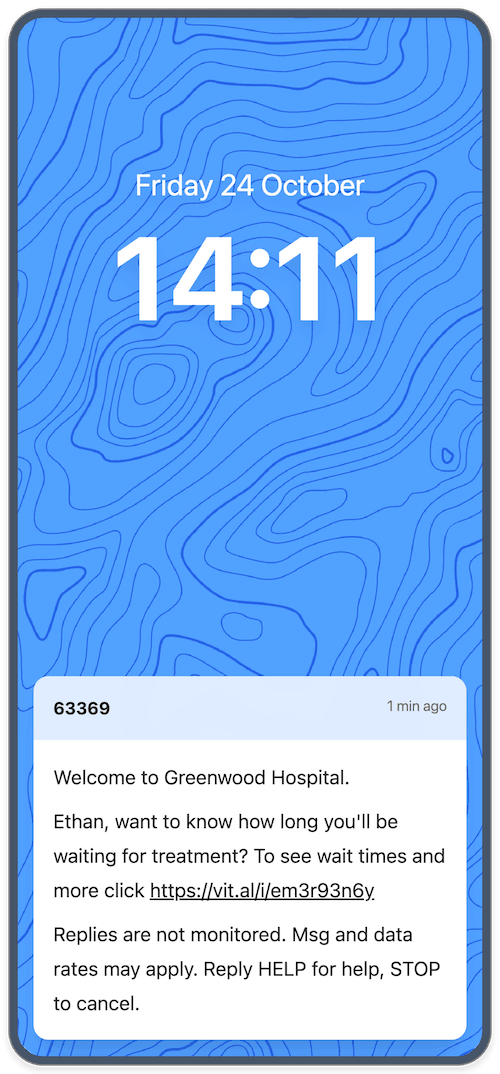
A real-time, step-by-step guide to the ER
Vital sits on top of Cerner, EPIC, Veradigm and Meditech using FHIR or HL7 for a real-time view of what’s happening inside the emergency department. Instead of patients feeling ignored & frustrated during long waits, Vital updates them on what’s happening behind the scenes.
This includes setting expectations on wait times, and highlighting what’s up next. E.g. First you’ll see a nurse in “triage”; then you’ll be assigned a treatment area that might be a hall spot, vertical track, or bed; etc. These steps are customized for your unique flow, and consider held for observation, hall spots, fast tracks, results waiting rooms, and other variations.
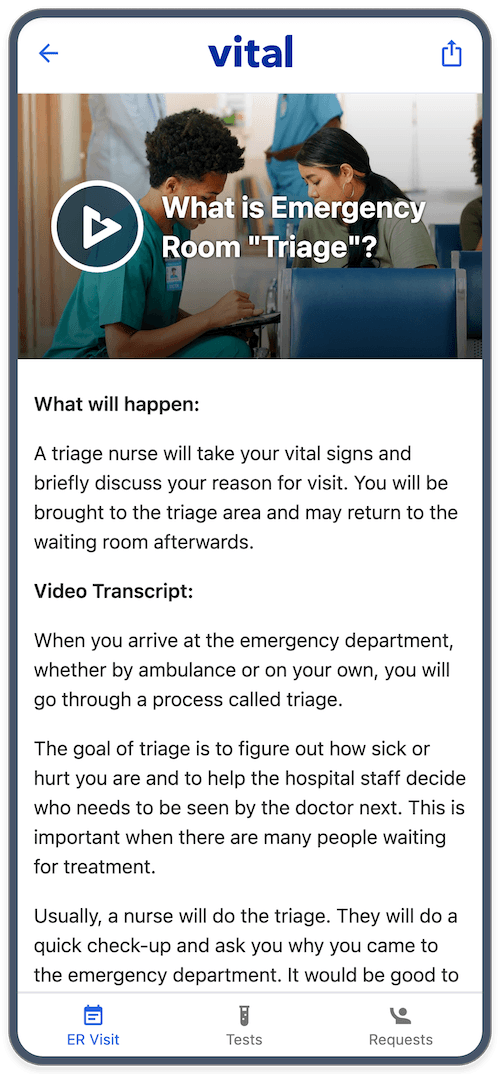
Accessible in any language
Vital’s content is professionally translated into multiple languages. If a non-English language is set in your EHR, even text messages for the patient invite, follow-up appointments, and lab results will be translated. Today, Vital supports:
Spanish
Armenian
Vietnamese
Somali
Korean
If more than 5% of your patient population speaks another language, we’ll translate into that language too.
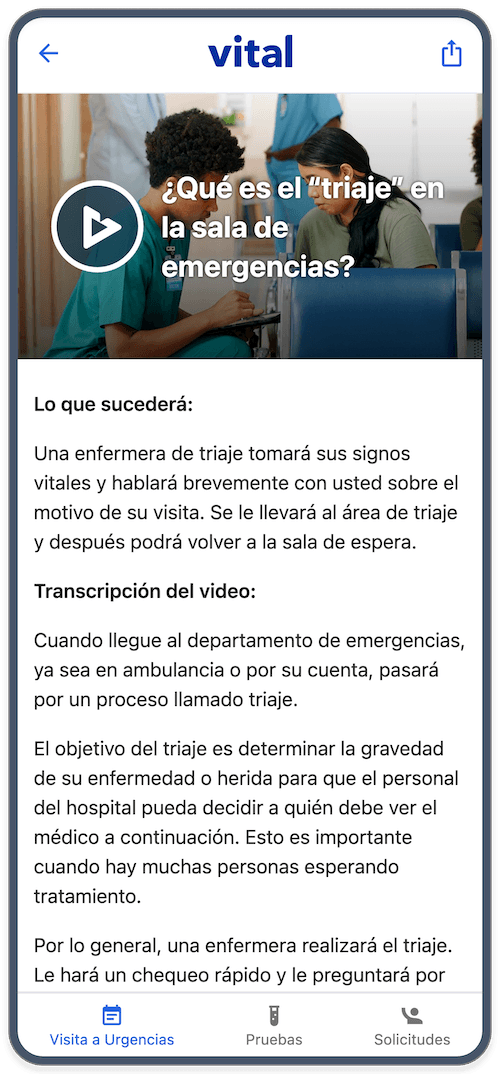
Use wait time as preparation time
Patients are nudged to collect urine for testing, to list their home medications, and learn terminology that can help describe their pain: sharp, dull, squeezing, radiating. The end result is a lower length-of-stay, often 10-15 min. per visit, or 25+ hours reduction each day for the average 40,000 visit ED.
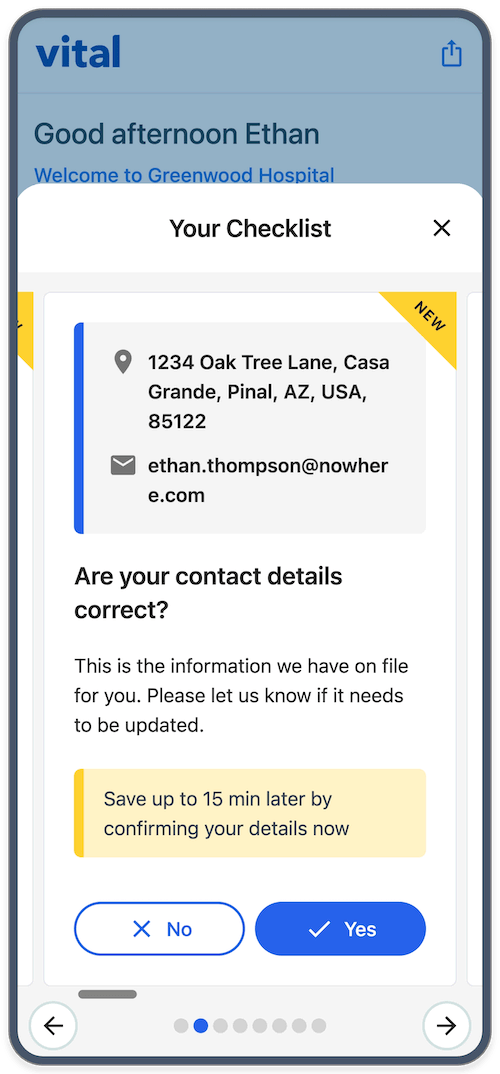
Automatic apologies reduce LWOBS
Something as basic as a well-timed acknowledgments can have a dramatic impact on your left-without-being-seen rate. Vital automatically acknowledges when a patient has waited too long. These are configurable, and some health systems even have a second acknowledgment an hour later offering water or a blanket.
Simply recognizing that a patient is probably irritated with a long wait - even if it’s an algorithm the spots the issue - works wonders.
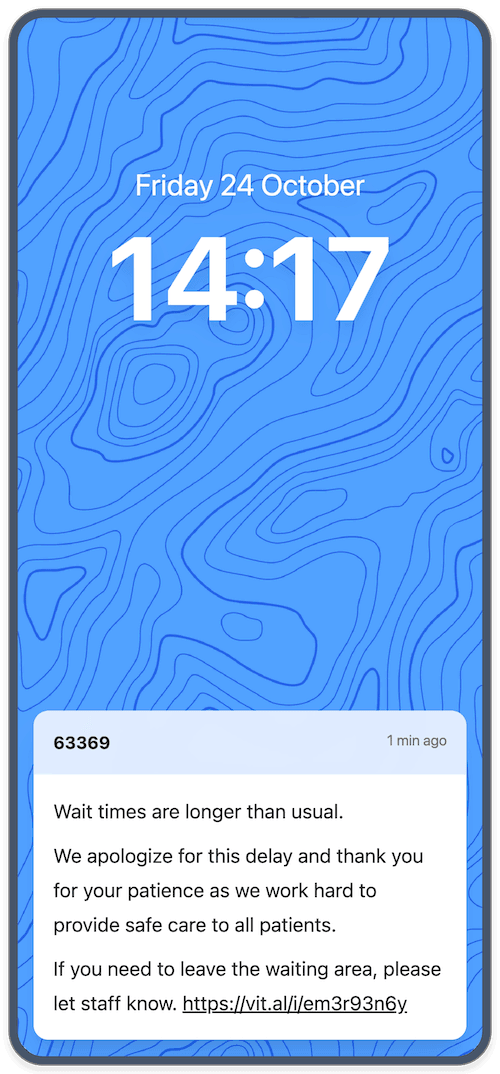
Real-time service requests & service recovery
Service requests are a valuable feature of Vital Emergency, ideal for lower-priority needs such as "I'm thirsty" or "I'm cold." These requests allow patients to communicate their needs without using the call button for non-urgent issues.
Requests are customizable and may vary by location. For instance, some ERs use these as "virtual call buttons" in areas where patients lack other means to reach staff.
Requests are typically routed to techs or patient experience staff. This saves precious nurse time. If no one is signed in to receive requests, the buttons disappear. Requests never go into the void, and are rate-limited to avoid too many requests from any one patient.
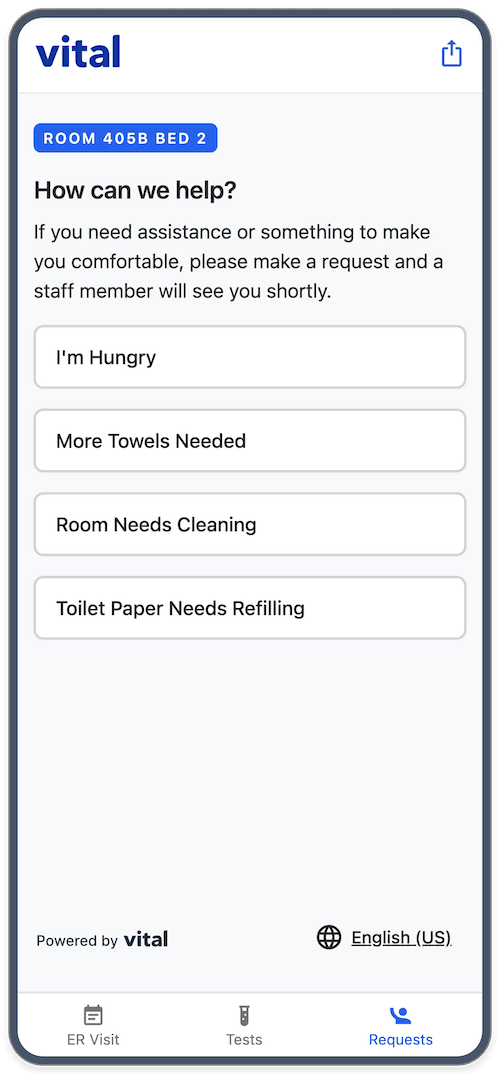
Patient-friendly test results with “sensitive” filters
At Vital, we believe that lab results should be more accessible and understandable. Instead of presenting results as chemical symbols with little context, we provide clear, meaningful descriptions for all common test components, making it easier for everyone to understand their results.
Videos for common labs include Complete Blood Count, or Understanding a CT Scan with Contrast.
We have 2,000 pages of content in English & Spanish tied to LOINC-level codes.
Hospitals can choose to delay abnormal or critical results. For example, “normal” results are usually released immediately, “abnormal” with a 30-60 minute delay, and “critical” results like cancer or loss of pregnancy may be omitted entirely.
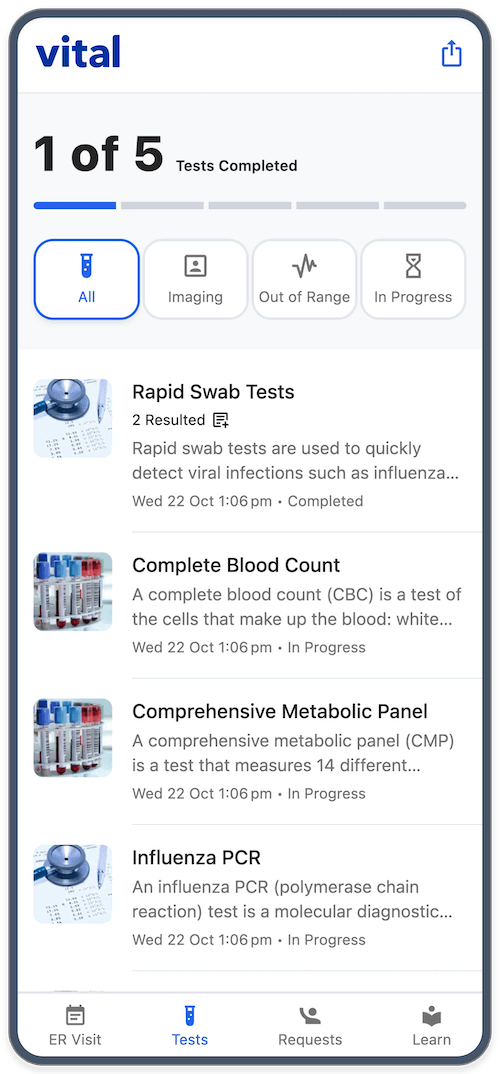
Generative AI to improve patient understanding
Radiology reports often present complex terminology that can be confusing for patients. While terms like "subluxation of the posterior talar fragment" may be clear to medical professionals, patients might struggle to understand them. Vital employs advanced generative AI in its innovative doctor-to-patient translator to convert medical jargon into clear, comprehensible language. By providing patients with understandable information, Vital empowers them to ask more relevant questions and enhances their adherence to care plans.
Try it yourself or see the launch at the Ai4 conference.
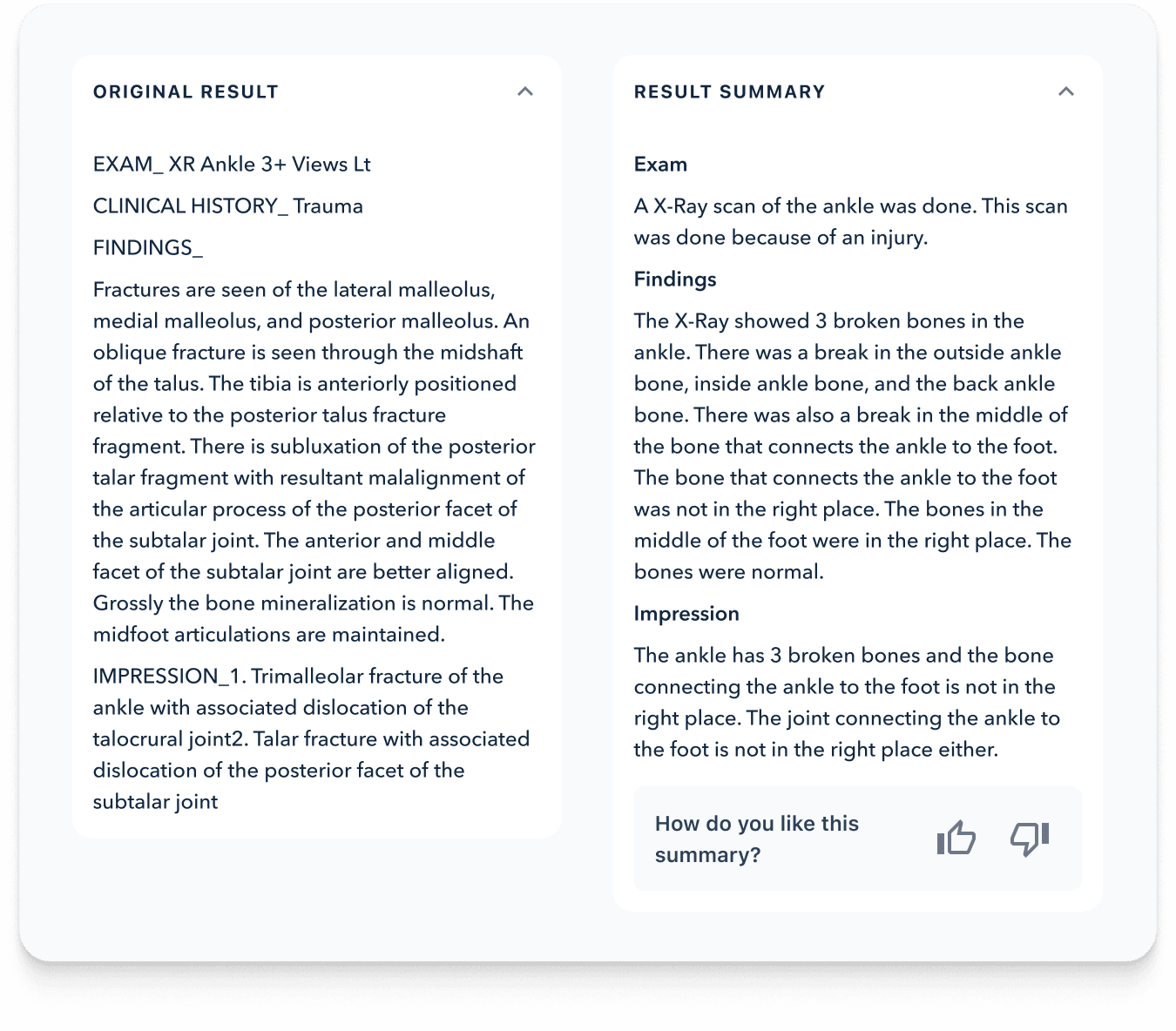
Discharge instructions that patients are motivated to follow
Many patients find it challenging to read through the 10-15 pages of discharge instructions they receive, and a significant portion may end up discarded.
Vital uses AI to parse discharge instructions into a 1-2-3 step checklist.
Vital summarizes the “to-do list” in discharge instructions for higher adherence to plan, resulting in lower readmissions and better health outcomes. This includes:
An AI summary of their medical plan & assessment.
Follow-up appointments with due dates for each.
A list of new medications, which pharmacy they were sent to, and pharmacy hours + directions.
Tertiary task list: sign-up for the patient portal, give a nurse compliment, and watch videos on diagnoses.
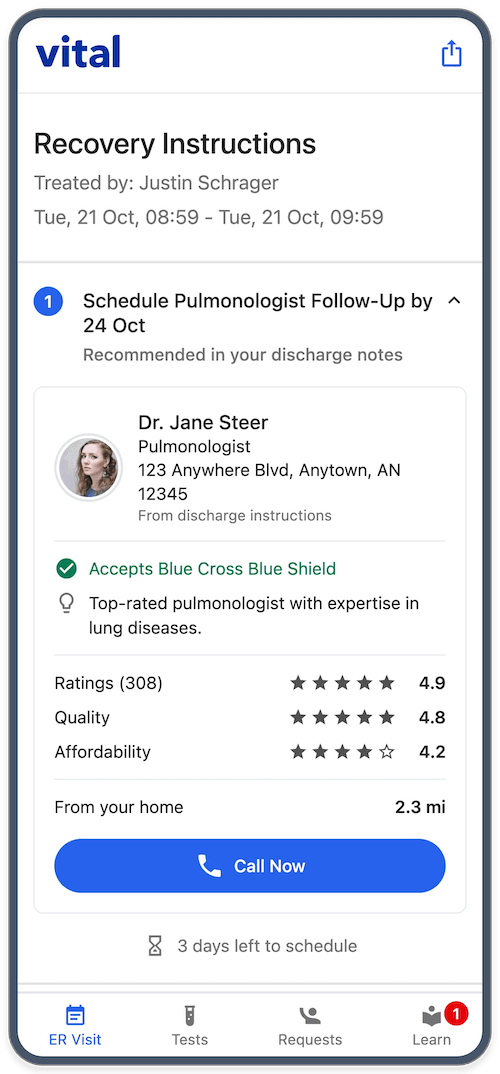
Built by emergency MDs & RNs for the ED
Vital was built for the ED by emergency physicians and nurses. Our Founder & Chief Medical Officer, Justin Schrager, MD, MPH is a board-certified and currently practicing Emergency Physician, working at Emory, where Vital launched, and now at IU Health as well. Together with Dr. Schrager, the medical leadership team infuses over five decades of combined clinical and scientific experience, enabling Vital to create products that are clinician-friendly and patient-centric. The tight feedback loop between the medical, product, and engineering teams enables Vital to innovate quickly and drive product development based on clinician and patient feedback. Together, our teams address problems in days or weeks instead of the quarters or years that you’re probably used to from big EHR vendors.
See a list of Dr. Schrager’s publications on the use of AI in emergency medicine, including:
Sterling, NW, Brann F, Frisch, SO, Schrager JD. Patient-Readable Radiology Report Summaries Generated via Large Language Model: Safety & Quality. J Patient Experience (accepted, in-press). DOI: 10.1177/23743735241259477
Brann F, Sterling NW, Frisch SO, Schrager JD; Sepsis Prediction at Emergency Department Triage Using Natural Language Processing: Retrospective Cohort Study. JMIR AI 2024
Sterling NW, Brann F, Patzer RE, Di M, Koebbe M, Burke M, Schrager JD. Prediction of emergency department resource requirements during triage: An application of current natural language processing techniques. J Am Coll Emerg Physicians Open. 2020 Oct 14
Zhang X, Kim J, Patzer RE, Pitts SR, Patzer A, Schrager JD. Prediction of Emergency Department Hospital Admission Based on Natural Language Processing and Neural Networks. Methods Inf Med. 2017 Oct 26
